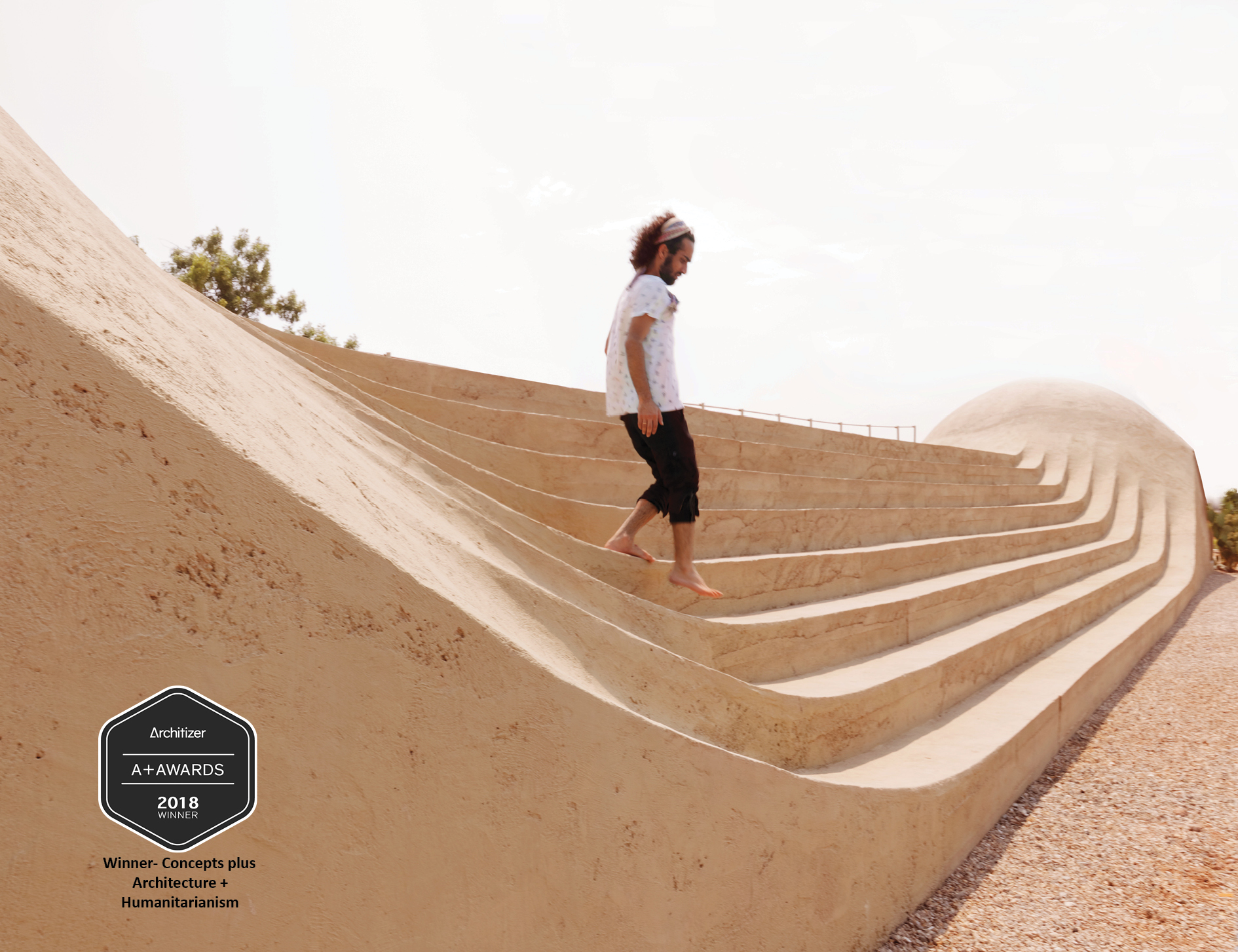
Winner- Concepts plus Architecture + Humanitarianism- Architizer A+Awards 2018
Rong Cultural Center (Hormuz Island, Iran)
The island is economically stressed out and has a history of consecutive failures when it comes to environmental issues.
“Hormuz Red Soil” has long been a matter of tension and the matter has been and still is perceived by many locals as the plundering of their island’s natural resources. The project client has entered the island in 2014, but with a sad end, people in Hormuz burned some parts of his construction. Afterward, he decided to have a more calculated presence in Hormuz.
Due to limitations of resources, a participative process has been set up. Then multi-disciplinary brainstorming workshops were held and "Presence in Hormuz" as an overarching vision was further developed to a set of strategies and tactics of an intervention plan. The first series of project that were planned to be executed based on environmental, self-sufficiency, and simple implementation features is going to target a sort of Hormuz-oriented tourism infrastructure: A community center, a tourist information center, a passenger station, a series of bicycle rental stations, cafes and restaurants, a waste recycling management center, a variety of tourist accommodation centers, multiple urban public spaces. First, a community center was set up temporarily to gain the participation of Hormuzians. Then a series of studies have been done on the morphology and constituting elements of Hormuz. After consideration of local and international case studies, the design team came to the conclusion that the rammed soil system and especially Nader Khalili’s SUPERADOBE could be appropriated and retrofitted with more contemporary solutions to be used in Hormuz.
Afterward, a cultural center containing: tourist information, café, and event management center planned to be built. “Rong” was the name that we chose for this complex. Rong is an urban space that people can walk on it. It has harmony with the island’s geomorphology and is iconic at the same time. Its presence in Hormuz brings pride for Hormuzians.
In its implementation, the adopted sandbag technology was combined with a steel structure covered with cement. Rong accepts people's reality and invites their participation and engagement. It is sustainable and recyclable and, it is built fast and with ease and as such, it can be replicated again and again. Perhaps we can summarize the design policies and construction goals of this project in few questions that we can ask from ourselves and the architecture. Can architecture bring back the booming era to the poor city of Hormuz and draw a more hopeful future for Hormuzians?
Can architecture save us from an unnecessary conflict?
Can architecture function as an active agent in an environmental issue by protecting limited soil resources from unfair plunder and save it for the next generation?
Can a Lab Experiment of building our predecessor (Architect Khalili) transform into a full-fledged Urban Solution?
Can a public topographic space be built based on natural geo-contours and out of local ego-particles?
Can we secure our intervention steps by testing techniques prior to the field?
Does a building need to be “tall” to change the skyline?